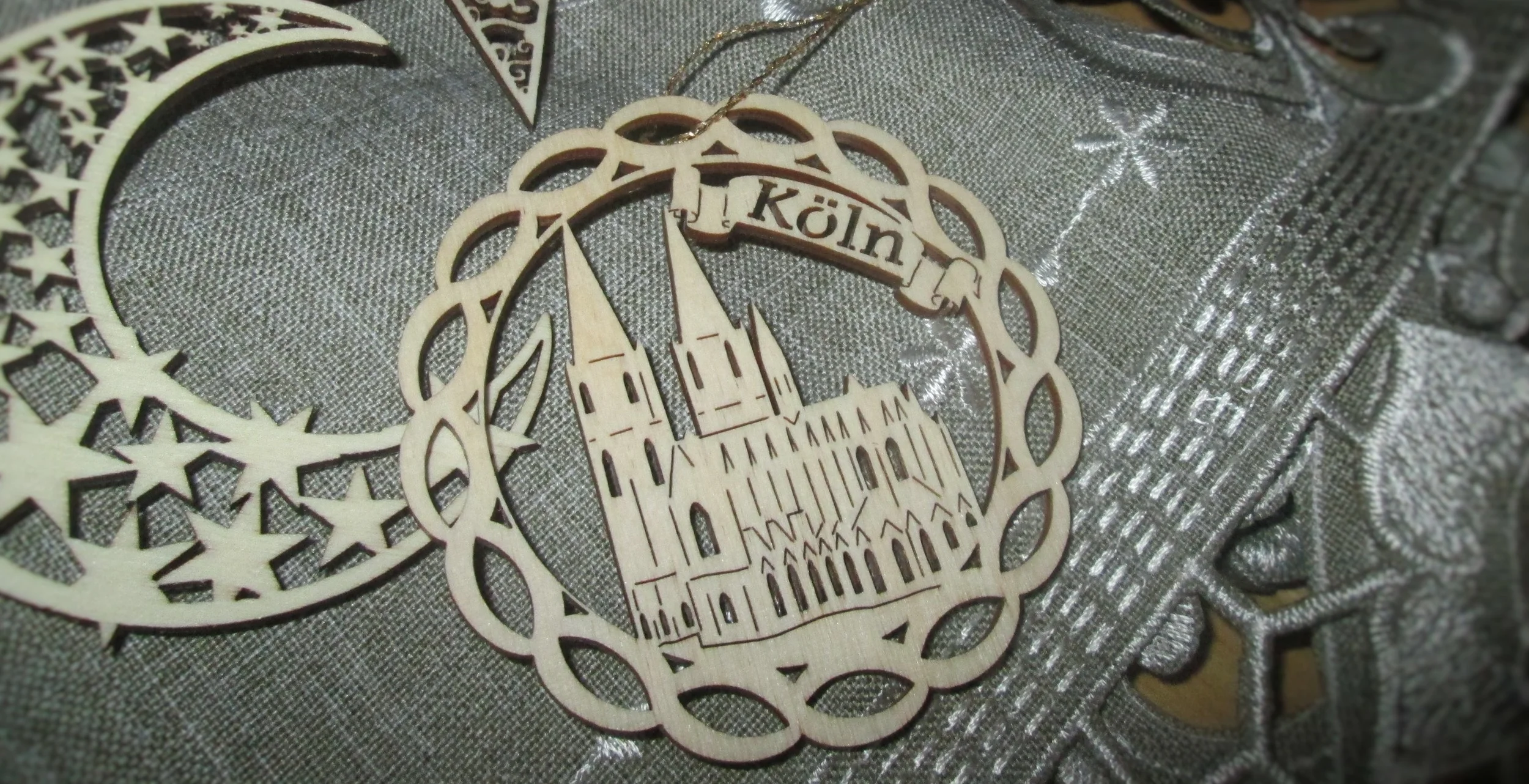Weihnachten in Deutschland
Olivia Wilkins
No one does Weihnachten better than Deutschland.
It is no secret that many American traditions are rooted in German Europe. For instance, Advent calendars—although not as popular in the U.S.—is a strong German tradition; and grocery stores have hundreds of these cardboard boxes with chocolates and other treats hidden behind paper doors on display beginning in November. Stille Nacht, or Silent Night, one of the most famous Christmas songs, was composed by Austrian Franz Gruber in 1818 (the words were written about two years before by Joseph Mohr). Even the variety of Weihnachtsmänner comes from Germany, from Kris Kringle (from
The image that inspired the modern Santa, illustrated by Thomas Nast for the poem "The Night Before Christmas" by Clement Moore in Harper's Weekly.
Of course, the most magical part about Christmas in Germany is the plethora of Weihnachtsmärkten. I remember attending my church's Christmas Bazaar growing up so that my mom could buy and proudly display the crafts my siblings and I had made in school. Most of the wares were crafts made by students from Immaculate Conception School, but there were also vendors who sold knitted goods, their own tacky crafts, and various other decorations used to try to pull of a cutesy country look popular to rural south-central PA. Refreshments were also available for purchase in the form of coffee, tea, and donuts. All of this was housed in the ICS cafeteria (a windowless, tile-and-concrete room with a remarkably low ceiling that you only notice after passing on to high school and beyond) and first-floor classrooms. Not very festive.
The German Weihnachtsmärkten, however, are about the most festive thing you'll ever see. Most (if not all) of these markets are outside in temporary buildings that, like most old buildings in Germany, look like something straight out of a Christmas story. Little wooden structures line the Plätze with strings of evergreen garland and lights or stars in the trees overhead. Many of the markets are also flanked by evergreen trees to cover the backs of buildings and fences the enclose them.
Stands in the Weihnachtsmarkt at Neumarkt in Köln with illuminated stars hung from trees overhead
Even more magical than the presentation of the Weihnachtsmärkten are the items for sale—whether they be food, toys, or decorations. The food at the Christmas markets is simply mouth-watering. Larger open wooden buildings house huge, circular grills covered in a variety of German Würstchen. Other stands have salmon smoking over an open fire or potatoes being prepared in any way imaginable, from Pommes Frites to Kartofelpuffer. Other counters are lined with examples of crepes and waffles for sale, piled high with fruit, chocolate, and Sahne. Additional sweets include freshly roasted nuts as well as chocolates, often shaped into objects like nuts and bolts and wrenches. Of course, you cannot have a German market without alcohol. While some markets have large open taverns selling Bier, all markets are overflowing with Glühwein. Glühwein is similar to most mulled wines in that is it often red, brewed with fruits and spices, and served hot. Glühwein can also be served mit Schuss.
Chocolates in the shape of various hardware on display at a stand in the Neumarkt Weihnachtsmarkt
Salmon being smoked over a fire in the Weihnachtsmarkt outside the Kölner Dom
Glühwein mugs from the Weihnachtsmärkten in Köln-Heumarkt (front) and Aachen (back)
On the inedible front, there is plenty more to see. Many stands sell toys (ranging from stuffed animals to wooden or metal brain teasers), hats and scarves, metal signs, or stationary (including pop-up cards featuring castles or the Kölner Dom. Of course, there are also countless stands selling decorations. Wooden ornaments, Nativity scene figurines, garlands, and table runners saturate the market. The best part is, most of these decorations are rather cheap. For instance, I bought three wooden ornaments at 2€ (~$2.20) apiece and a lace table runner for 7,50€ (~$8.25); in the States, each ornament would have easily cost $5-$7 and the table runner $30+, making the purchases a very affordable investment in future Christmases as well as a special momento for my time living in Deutschland.
Wooden Christmas ornaments and a table runner bought from the Weihnachtsmärkten in Neumarkt (Köln) and Aachen, respectively
After weeks of scoping out Weihnachtsmärkten, the holiday arrived. Alex and I opened it by attending Vesper on Christmas Eve at the Kölner Dom. Before arriving, we expected the Dom to be quite crowded; typically families go to mass or out to eat on Christmas Eve before arriving home later at night to find and open the presents left by Christkindl or der Weihnachtsmann (an obvious difference from the American tradition of opening gifts on Christmas morning). However, we were shocked by the turnout at the Christmas Eve service. The Dom has a capacity of about 20,000 people, and between the full seats and well over half of the standing space being occupied, it is safe to estimate that the Dom was only a couple thousand away from hitting the mark. In addition to the popularity of the Dom on Christmas Eve, the venue was special because it houses something else—der Dreikönigsschrein, the largest reliquary in the Western world, which is said to contain the bones of the Three Wise Men.
Bärenartikel (bears and accessories, essentially) stand at the Weihnachtsmarkt with Kölner Dom in the background
Although the markets and decorations around Köln and other cities (e.g. Aachen and Bad Münstereifel) were breathtaking, there was something obviously missing throughout the Christmas season—music. Before the holidays, the absence of Christmas music (or any music for that matter) was clearest in grocery stores. Weihnachtsmärkten were silent save for the sound of cars and trains passing by. Even Starbucks didn't play Christmas music, except for a few songs on der zweite Weihnachtstag.
